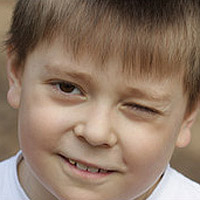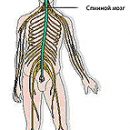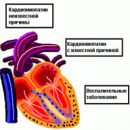Child ticks have a difficult nature and require serious treatment. But the main thing is that parents should do for their sunny kid - to be an example of relaxing cheerfulness. How to help the child get rid of ticks, the author of this article knows.
Content
 Farm causes to appeal to a children's neurologist and psychotherapist are ticks (ticose hypercinesis), which are sudden, involuntary, violent, ripped, repeated movements. They usually arise aged 5-8 years, and in 4-6 cases more often ticks are found in boys than girls.
Farm causes to appeal to a children's neurologist and psychotherapist are ticks (ticose hypercinesis), which are sudden, involuntary, violent, ripped, repeated movements. They usually arise aged 5-8 years, and in 4-6 cases more often ticks are found in boys than girls.
In the origin of Tikov play the role of genetic and immune mechanisms, the pathology of the period of pregnancy and childbirth, as well as psychosocial factors. You should always keep in mind the possibility of exposure to several factors affecting each other.
Psychological factors (unfavorable family atmosphere, separation with one of the parents as a result of the collapse of the family, bad relations in the children's team) play the role of provoking or enhancing factor. In some children, the disease appears after the first days of school classes, against the background of school adaptation stress («Tiki on September 1st»). Among other stressful situations often encounter separation with one of the parents as a result of the collapse of the family, episodes of sudden frightement. In some children, teaks occur after a long mental overload, which can be viewed as a chronic stress factor.
A distinctive feature of Tikov is their insurmountable character. Any attempt to suppress the effort of the appearance of teak inevitably leads to an increase in voltage and anxiety, and the violent committing the desired motor reaction brings instant relief. Tiki is significantly enhanced under the influence of emotional incentives - anxiety, fear, embarrassment.
Tiki: What are they
Tiki can be motor (motor) and voice (vocal). Motor ticks resemble targeted movement; most frequent of them are blinking, frowning eyebrows. Less often turns heads or folding the head back (remember the headquarten of Ovechkin performed by Armen Dzhigarkhanyan from the film «New adventures are elusive» or Lelika out «Diamond hands» performed by Andrei Mironova). Vocal ticks manifest themselves shouting meaningless sounds or words. In severe cases, vocal ticks can manifest themselves in the form of coprollia (pronouncement of aggressive, offensive or socially inadequate words or phrases).
The combination of motor and vocal ticks is called turret syndrome. It is known that similar manifestations were celebrated in Mozart.
The flow of ticks is wearing a wave-like character with periods of improvement and exacerbation. In children, for example, the improvement period can be observed during the holidays. Some patients celebrate seasonal fluctuations in the intensity of symptoms.
Around half of the cases, children with ticks are noted manifestations of attention deficit syndrome with hyperactivity. And ticks are noted about each third child with attention deficit syndrome with hyperactivity. These diseases have a lot of common pathogenesis units. Tiki are more often noted in cases of the predominance of hyperactivity and impulsiveness (and not inattentive). Usually, the manifestations of the syndrome of attention deficit with hyperactivity are noted earlier, and ticks are joined later. Frequent tick satellites are the dysgrafy and dyslexia. In addition, children with ticks often noted various obsessive movements, thoughts, desires.
How to get rid of ticks
Children's neurologists and psychotherapists are engaged in the treatment of children with teaks. It is best to contact a specialized center, where there are neurologists, psychotherapists, psychologists. Before starting treatment, it is better to make a power-ancephalogram.
Children with ticks should be observed. It should be eliminated by unusual negative and positive stimuli if possible. Tiki is often strengthened while watching television gears, especially when the electric light is turned off. The fact is that bright flickering light is able to provoke changes in the bioelectric activity of the brain. Therefore, viewing television gear for children with ticks should be limited as much as possible for 1-1.5 months. The same limitations relate to computer games.
There are features of psychological correction in children with teaks. The main goal in such cases is not so much a reduction in hypercines, how much improvement of social adaptation. Since children with tics are characterized by low self-esteem and increased anxiety, it is necessary to encourage patients, inspire them to believe. It is also necessary to explain to parents of such children that ticks are not arbitrary. This is very important psychologically, since the patient's native patients often notice that sometimes he can hold back tick. As a result, some begin to consider TIC disease, others - promiscuity. It makes no sense to restrain ticks, it is also impossible to focus the attention of the child in hyperkinosis.
Psychotherapy plays a special role in the treatment of Tikov. The following psychotherapeutic techniques are applied to treat Tikov: behavioral methods of therapy, hypnotherapy, autogenic training, symbol. The use of a biological feedback method will allow the child to learn to relax and reduce not only ticks, but also psycho-emotional tension.
In the treatment of teaks, tranquilizers and neuroleptics that have a soothing effect are used. Since ticks are often combined with inattention and school problems, in complex treatment, various nootropic drugs are used, which positively affect the highest integrative functions of the brain. A concrete drug for the treatment of your child will recommend a neurologist.
And yet: to improve the condition of the child, it is imperative that parents themselves can be calm and cheerful.









